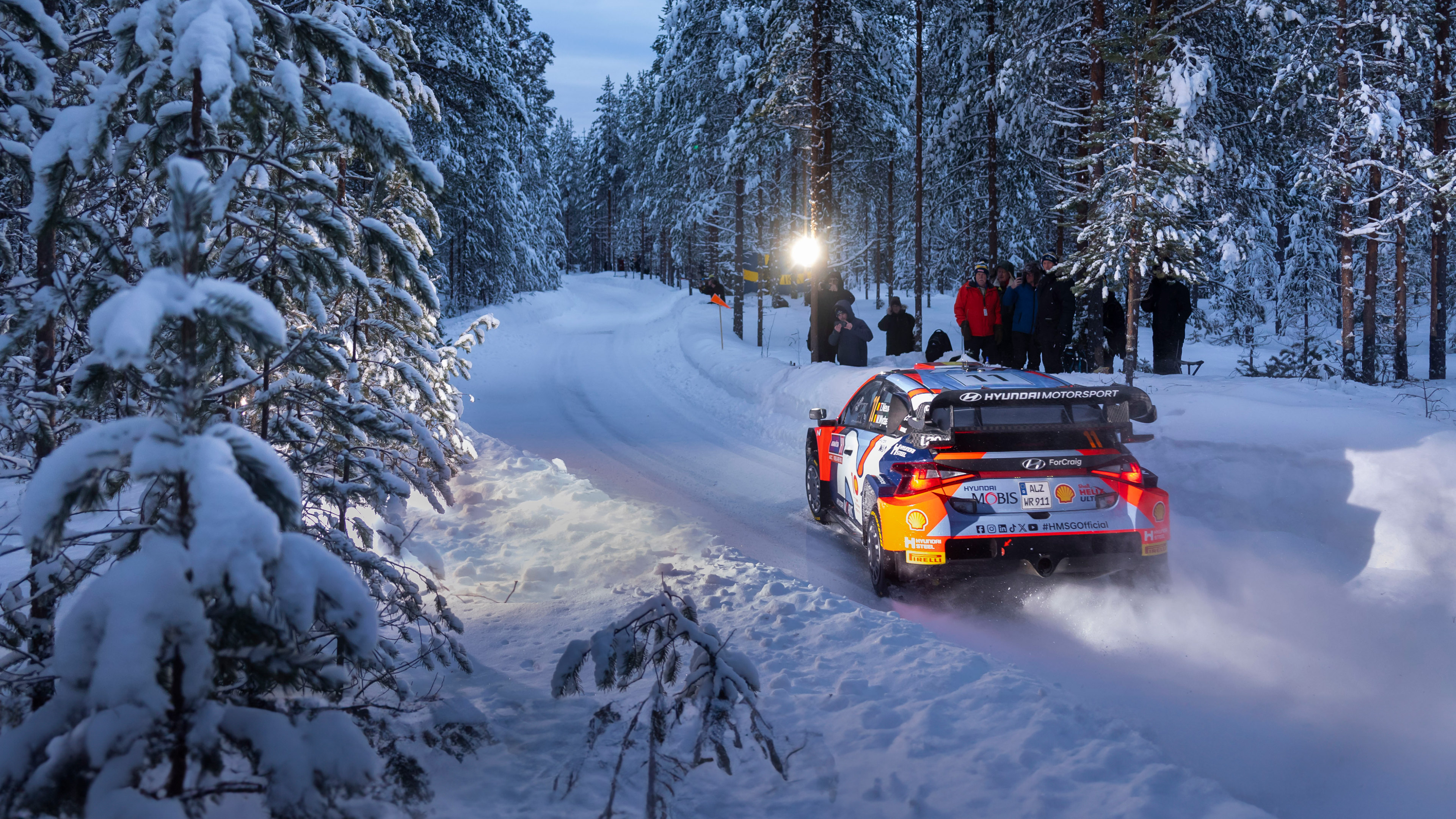
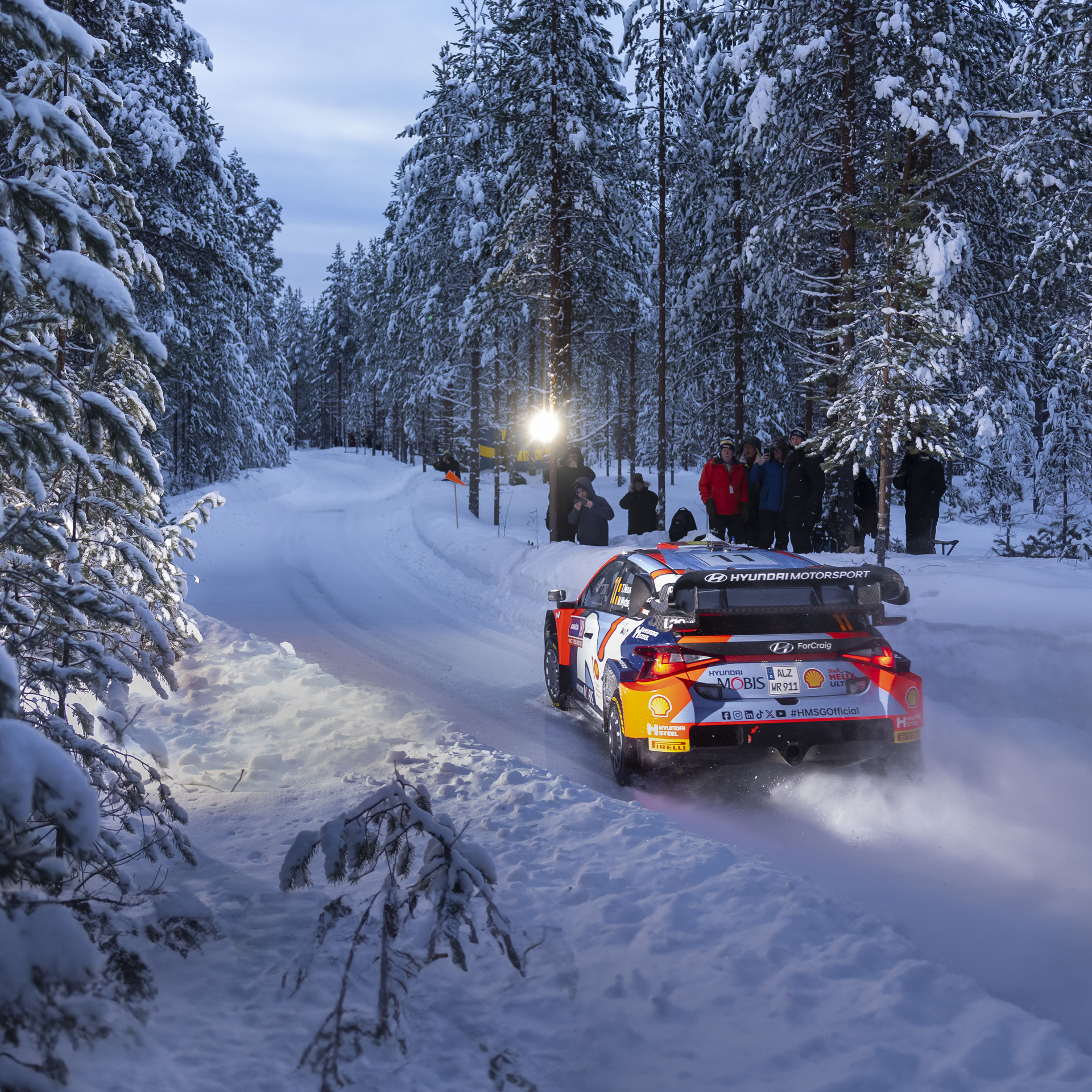


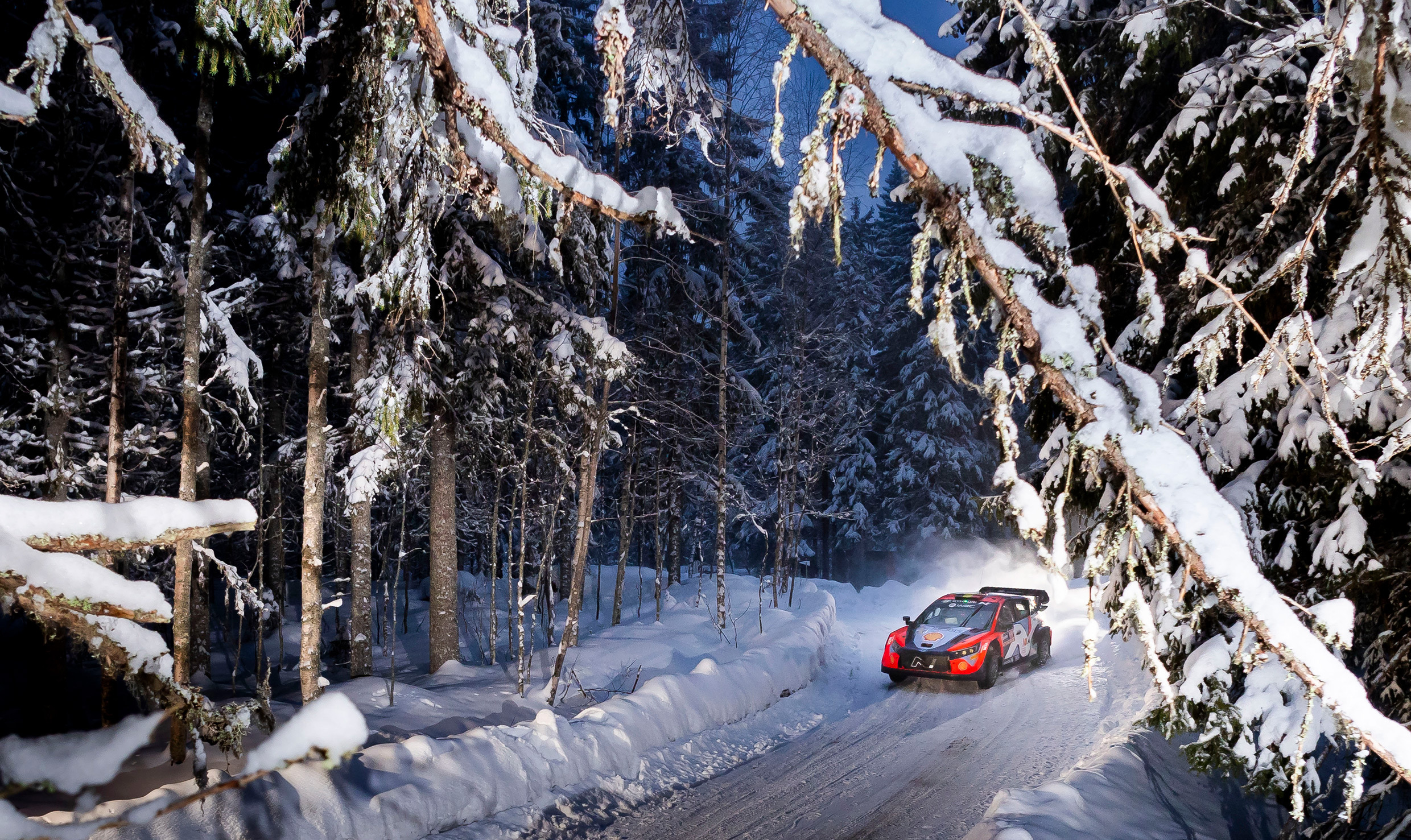
The Sweden Rally indeed holds a place in the hall of WRC since 1950, boasting one of the longest histories among the active hosts. Initially held in summer, it shifted to winter in 1965, reaping fame as a full‒snow rally since the 1973 WRC. Notably resilient, the Sweden Rally has been canceled only four times despite many rallies coming and going. The interruptions include the 1974 oil crisis, a weather anomaly in 1990 that melted the snow, and in 2009, it stepped aside for Norway due to the FIA’s round rotation policy. The most recent cancellation was in 2021 amid the pandemic chaos.
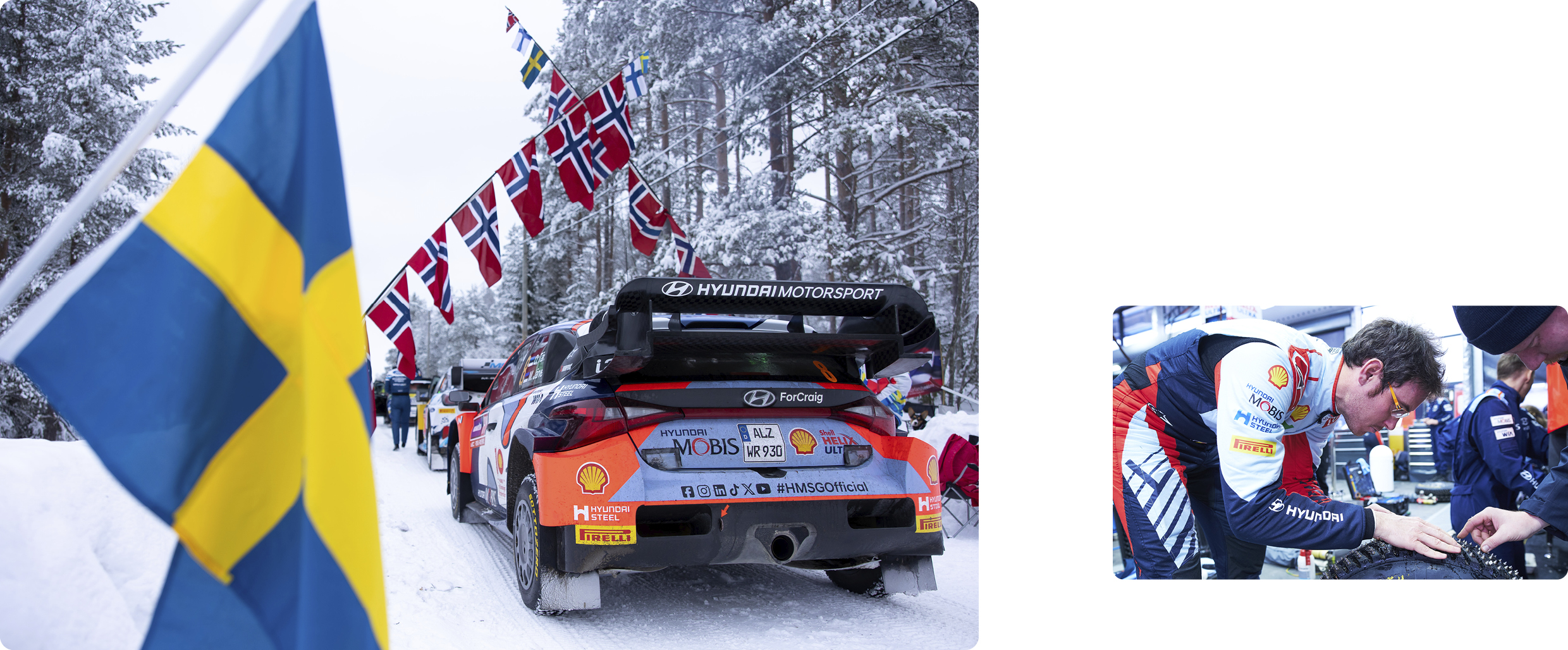
The rally’s unique appeal lies in its unparalleled track conditions. Excluding 2021, when the Arctic Rally in Finland stepped in amid the pandemic, it has long held sway as the calendar’s sole full‒snow rally. The move from Torsby to the current Umeå was precisely to preserve its snow rally identity. As the climate anomaly pushed temperatures up, even Sweden saw a shortage of snow in February. The decision was made in 2022 to move north to circumvent this issue, with Umeå replacing Torsby as the new venue.
A lack of snow might seem trivial, but it’s far from a simple issue for the Sweden Rally, the sole WRC event employing studded tires. While these tires, with hundreds of tungsten tips, grip firmly on hard ice and snow, exposing dirt and gravel tears them up quickly. Adequate snow coverage is crucial for smooth race.
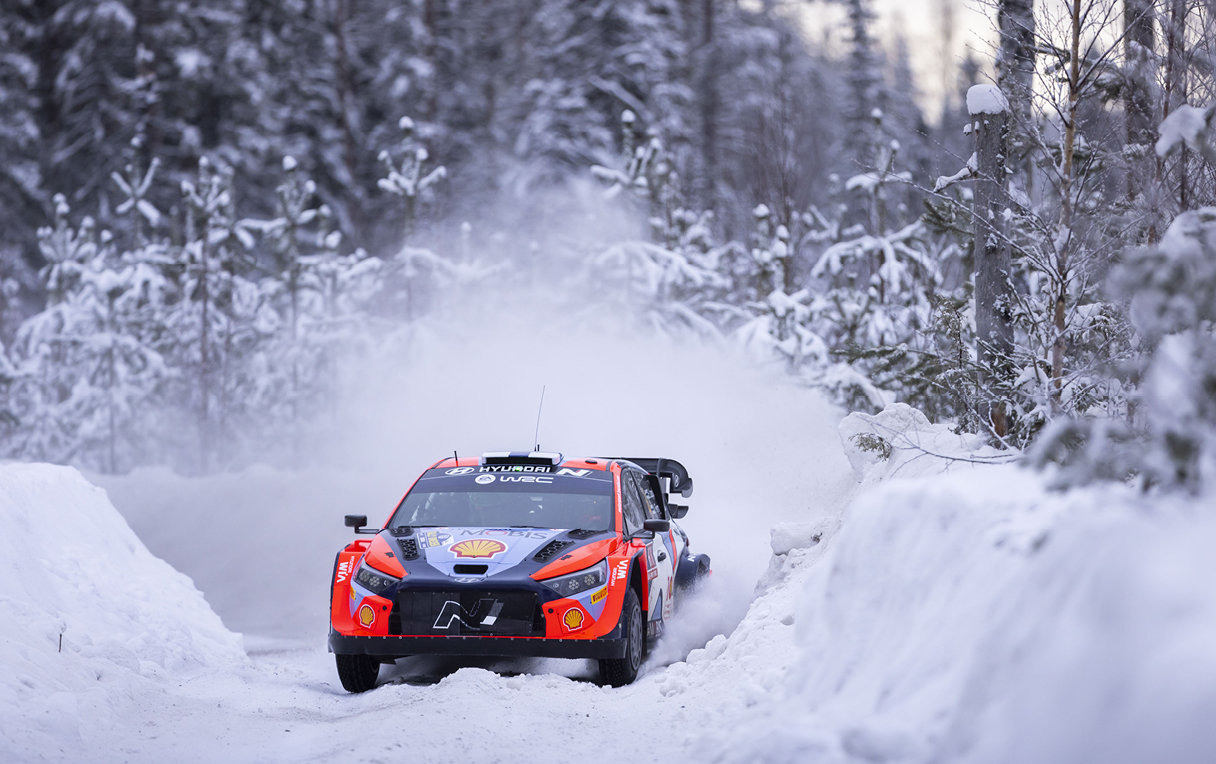
Thanks to its relatively corner‒free stages and specialized tires, the Sweden Rally is known for its high speeds despite the slippery surfaces. However, drivers must adapt to a boat‒like handling and completely different braking points. For years, the rally’s nature meant the trophy often went to Scandinavian drivers ‒ until Frenchman Sébastien Loeb’s 2004 victory.
Historical wins tally with Sweden’s own Stig Blomqvist leading at seven victories, followed by Marcus Grönholm and Björn Waldegård at five. Toyota’s Jari‒Matti Latvala, now a team manager, has four, while active driver Sébastien Ogier has three, although he didn’t participate this time. Ott Tänak, last year’s winner, has two wins, and Thierry Neuville (2018), Kalle Rovanperä (2022), and Elfyn Evans (2020) have one each.
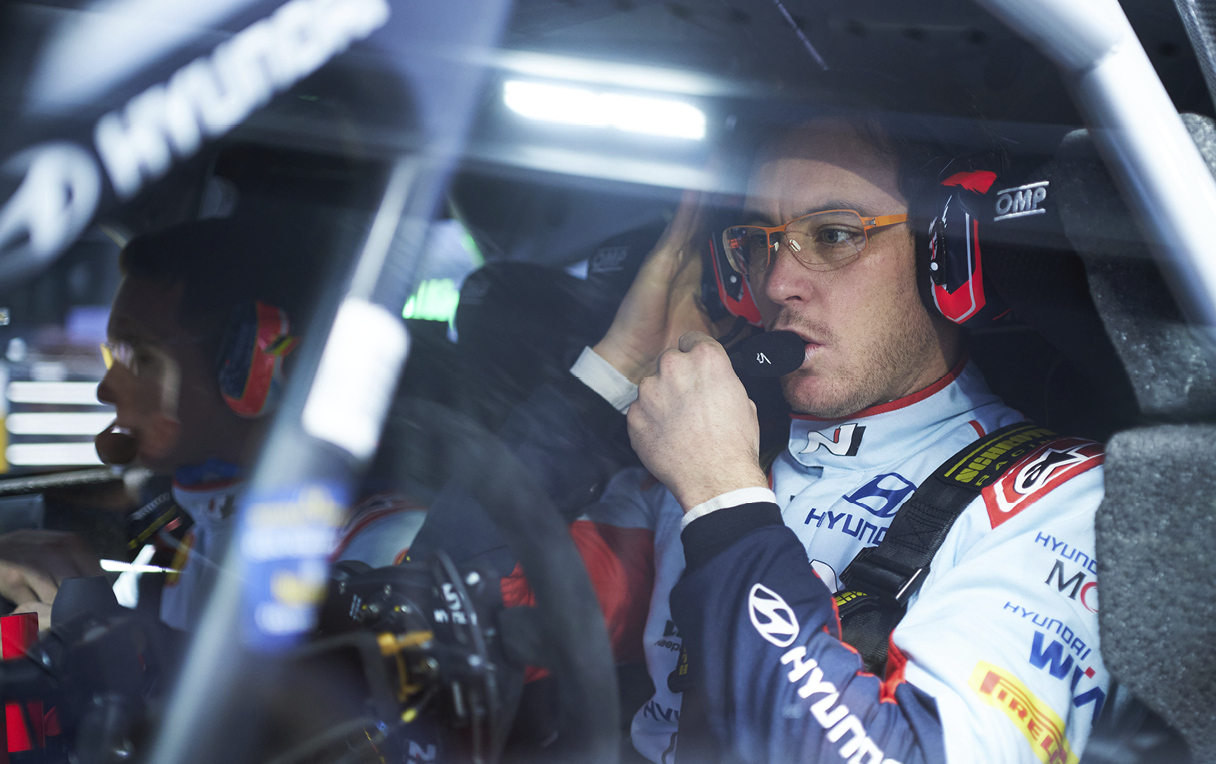
Hyundai Shell Mobis placed Neuville and Tänak at the top seats, assigning their third car to Esapekka Lappi. Leading the points after his opening win, Neuville was first on the course for this race, keeping a sharp eye on the weather forecast. A heavy snowfall just before the race would mean clearing the track. Neuville anticipated, “We’ll have to see what the conditions will be like when we get there. If the surface is heavily frozen, the road may be OK for us ‒ but if there’s a lot of snow and tough conditions, we might be fighting for fifth or sixth. We can only hope for good grip. If so, we can fight for the win.”
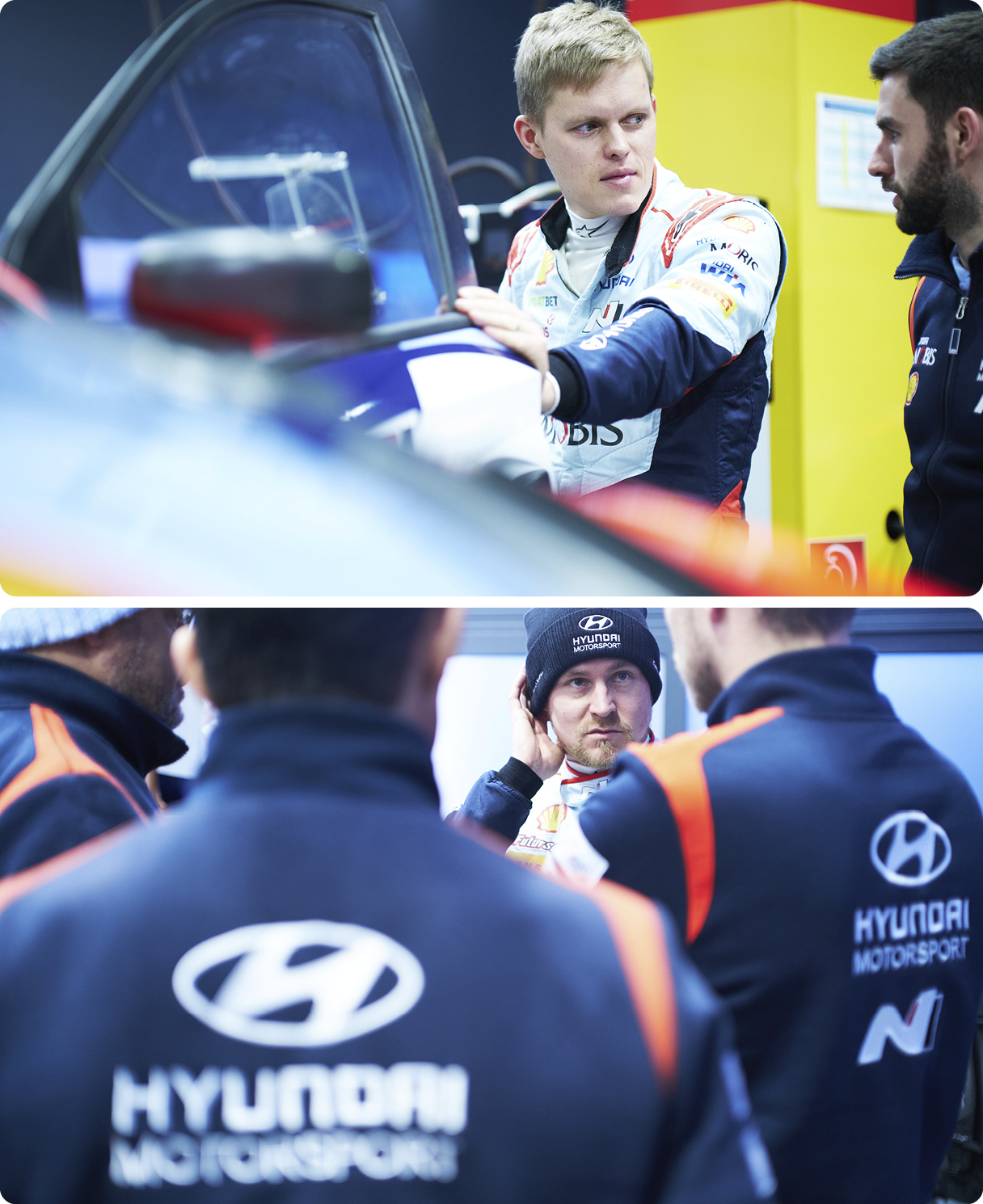
.Tänak faced engine woes at the season opener in Monte Carlo, finishing fourth—a positive outcome considering his ongoing acclimation to the new rally car. Tänak, not only last year’s Sweden victor but also the most seasoned winner in the current entry list with two wins, had a strategic advantage starting fourth in the championship lineup. Meanwhile, Esapekka Lappi made his season debut. Lappi, who had participated in a full season up until last year, switched to a part‒time role following Tänak’s return. The Finnish driver, no stranger to full‒snow rallies, has a history of strong finishes—second place in 2019 and third in 2022.
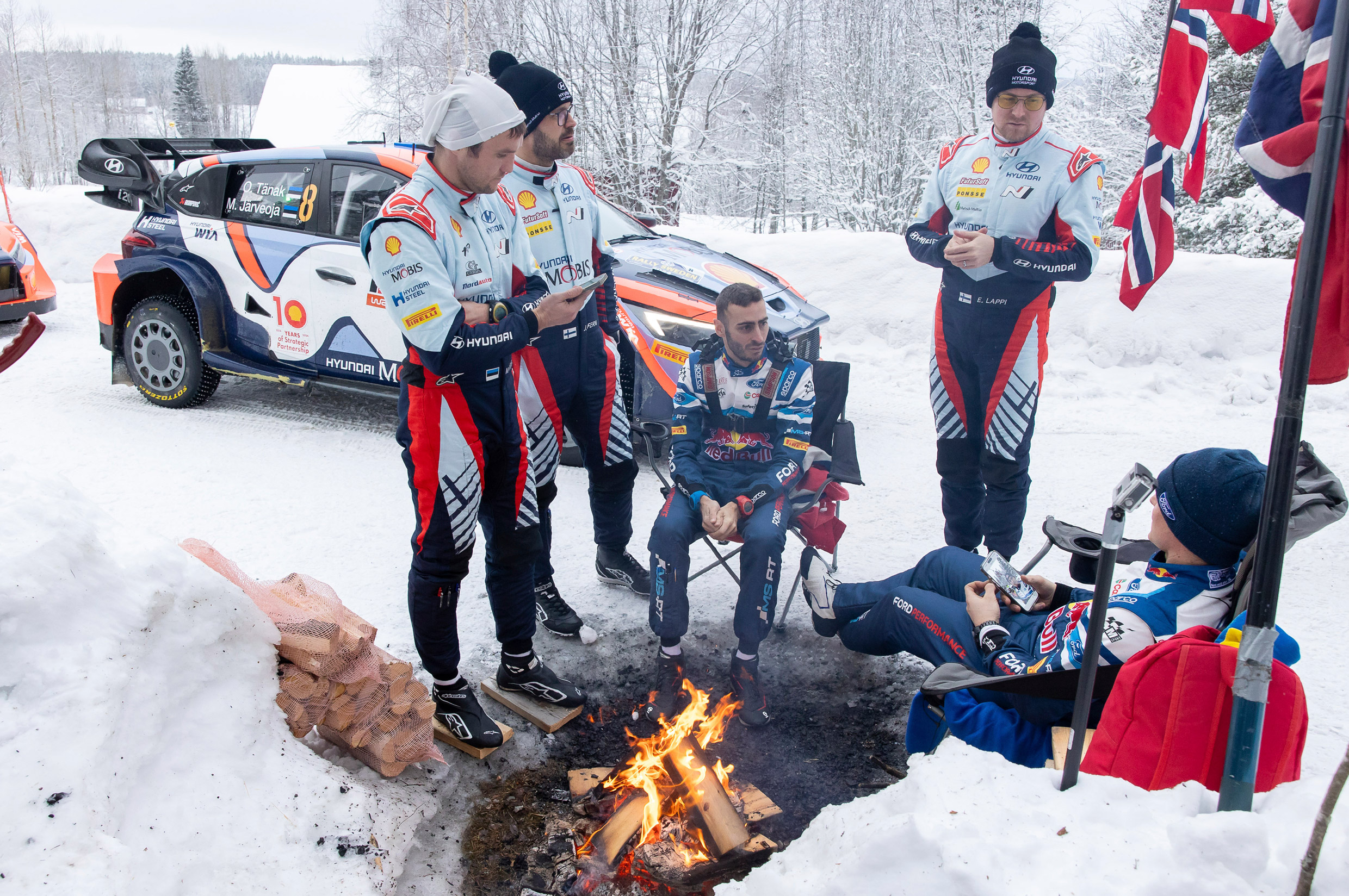
Toyota entered the season without Ogier, with Rovanperä joining the lineup for the first time this season. Last year’s champion Rovanperä opted for a sabbatical, participating in selected events rather than the full season. As a result, the ace role for the team shifted to Evans. Together with Takamoto Katsuta and Rovanperä, they were tasked with scoring manufacturer points, but another Yaris Rally1 was on the roster for the event, driven by privateer Lorenzo Bertelli—a name familiar to those interested in fashion. The heir to the Prada fashion house, Bertelli is known not only for his car enthusiast credentials but also for over a decade of direct WRC participation. Until 2022, he has been using an M‒Sport Ford before switching to a Toyota Yaris.
M‒Sport Ford, consistent with their opening lineup, placed Adrien Fourmaux and Grégoire Munster on their entry list. Fourmaux, who secured fifth at the opener, is quickly establishing himself as the team’s lead driver, while Munster seems to still need time to adapt to his rally 1 car.
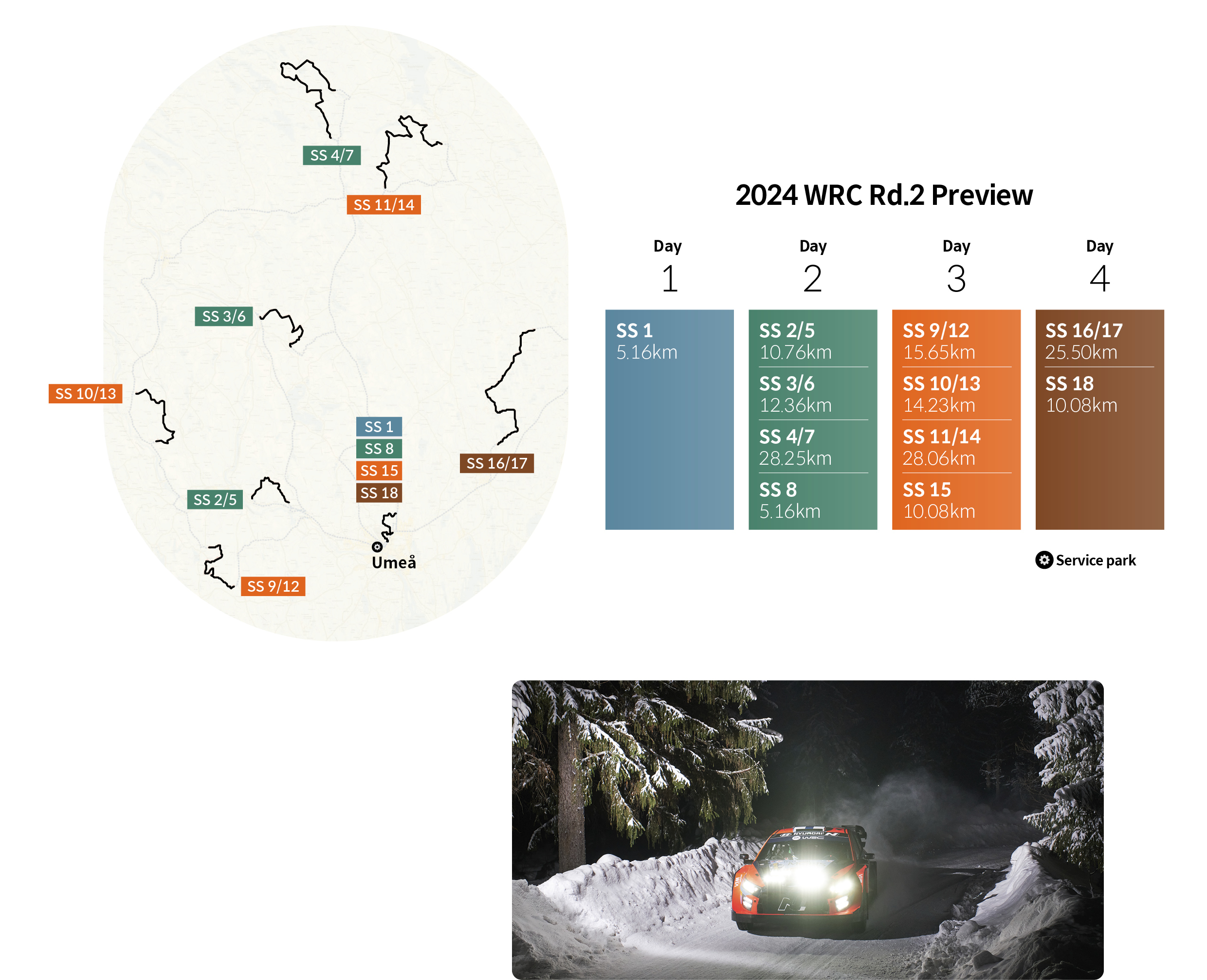
On Thursday morning, February 15th, a 5.42km stage north of Umeå set the scene for the shakedown test. The drivers have gone through test drives, 3 to 5 times each, and Lappi topped the time charts for Hyundai. Neuville dealt with an intercom malfunction with co‒driver Martijn Wydaeghe, but ingeniously utilized an on‒road microphone to complete a safe run. He also had to plow snow as he was the first to drive. Tänak, following Lappi and Fourmaux in third place, commented, “The recce’s first day had a lot of ice and high grip, which was quite nice, but now a bit of snow has fallen, turning it into the opposite situation. It’s quite challenging.”
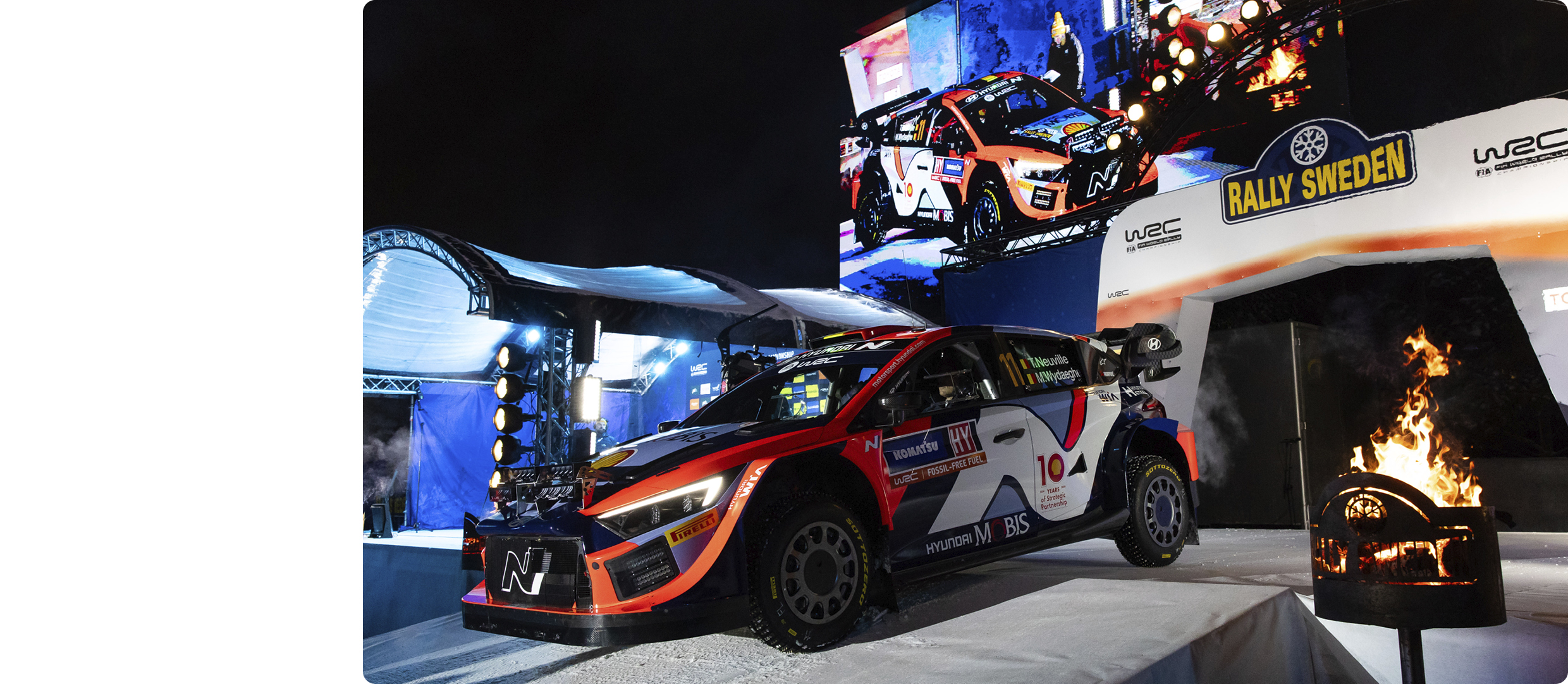

At 7:05 pm on Thursday, with the sun set over the forests north of Umeå city center, the 5.16km SS1 (Umeå Sprint) inaugurated the main event. Amid high‒speed sections exceeding 150km/h and sharp corners, three jumps amped up the excitement for spectators. After just one stage on the opening day, Rovanperä led the pack, with the Toyota trio—Katsuta and Evans included—securing the top three spots. Tänak was fourth, followed by Fourmaux, Neuville, and Lappi. Behind Munster marking eighth, Solberg took the lead in WRC2, with home crowd support. Grappling with grip issues, Hyundai scrambled to optimize their settings for traction.
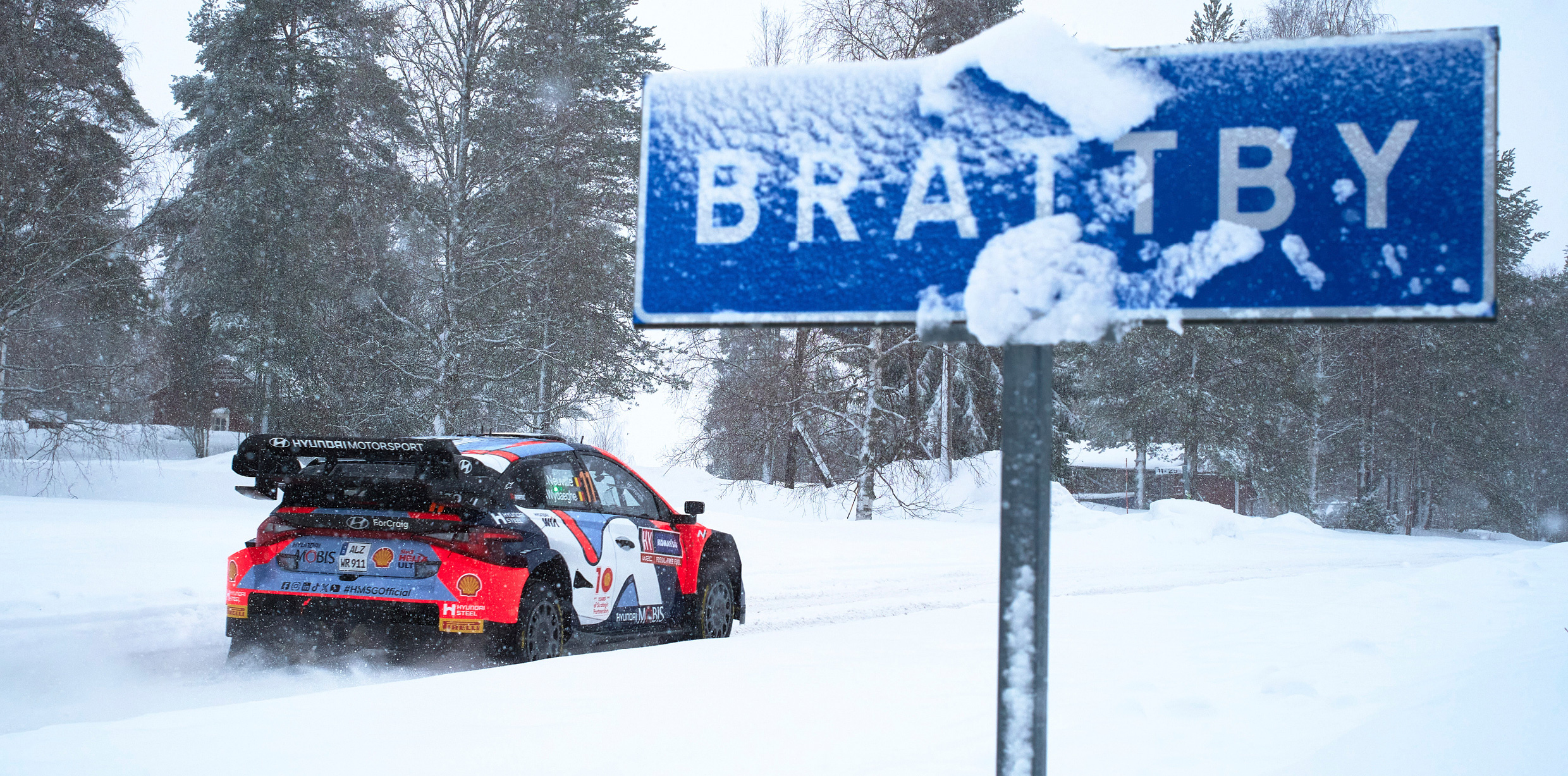
Drivers prepared for SS2 on the morning of Friday, February 16th, heading west from Umeå. The day’s schedule involved repeating the three stages of #42 Brattby, Norrby, and Floda in the morning and afternoon, concluding with the Umeå sprint course on Friday. The seven stages from SS2 to SS8 totaled 107.9km.
Originally named Brattby, SS2 was rechristened ‘#42 Brattby’ to honor Craig Breen, who clocked the fastest time there last year. Rovanperä conquered the foggy opening stage, pushing Lappi and Tänak ahead of Evans into third and fourth overall. Lappi was quickest in SS3, narrowing his gap to the leader to just 6.6 seconds while maintaining fourth place overall.

During the longest stage of the race, Floda (28.25km), Hyundai faced its first challenge. Tanak, running third overall, retired after being swept into a snowbank at the 18.5km mark. But Toyota couldn’t revel in their rival’s mishap for long. Rovanpera, leading the pack, spun out, damaging his radiator and putting an end to his race. This shuffle brought major changes to the leaderboard, with Katsuta taking the lead, Lappi moving into second, and Evans and Fourmaux advancing to third and fourth, respectively. Neuville held fifth overall, followed by the WRC2 drivers ‒ Oliver Solberg, Sami Pajari, and Georg Linnamäe. Munster lost precious time manually changing tires when the cold thwarted his electric tools.
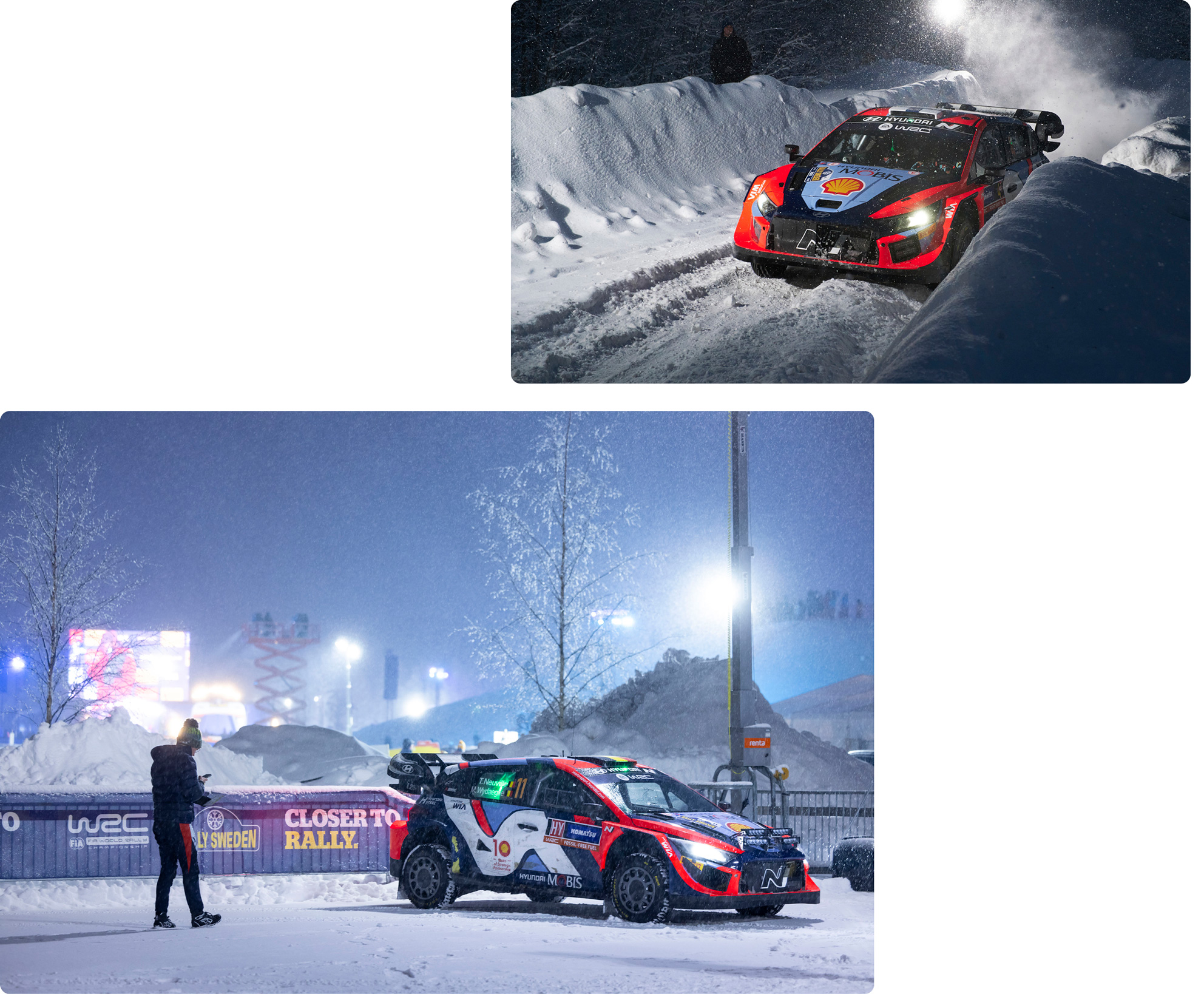
The Rally1 drivers, unfazed, double‒stacked their spares, ready to battle the wintry wrath. Thierry Neuville felt the sting of the conditions, trailing his morning time on SS5 by nearly a full minute. Esapekka Lappi, while quickest in the Rally1 class, found himself in a relentless fight against the snow’s ceaseless siege. Yet, it was WRC2’s Georg Linnamäe who seized the stage’s top time. Lappi’s return to SS6 saw him setting the pace, closing in on overall leader Takamoto Katsuta by a mere 0.3 seconds. However, Neuville succumbed to a fuel pressure fiasco, tardily arriving at time control and suffering a 40‒second setback. In a twist of fate, Elfyn Evans assumed the vanguard, becoming the unexpected janitor of the snow‒laden tracks.

Lappi maintained his momentum through SS6 and SS7, with the longest stage becoming particularly treacherous as darkness fell and snow intensified. Lappi rounded out Friday as the leader, with a slim 3.2‒second advantage over Katsuta. Rally1’s retirements and mishaps promoted WRC2’s Oliver Solberg to an astonishing overall third, with Fourmaux and Evans completing the top spots; Neuville, hindered by engine troubles, trailing at eleventh.
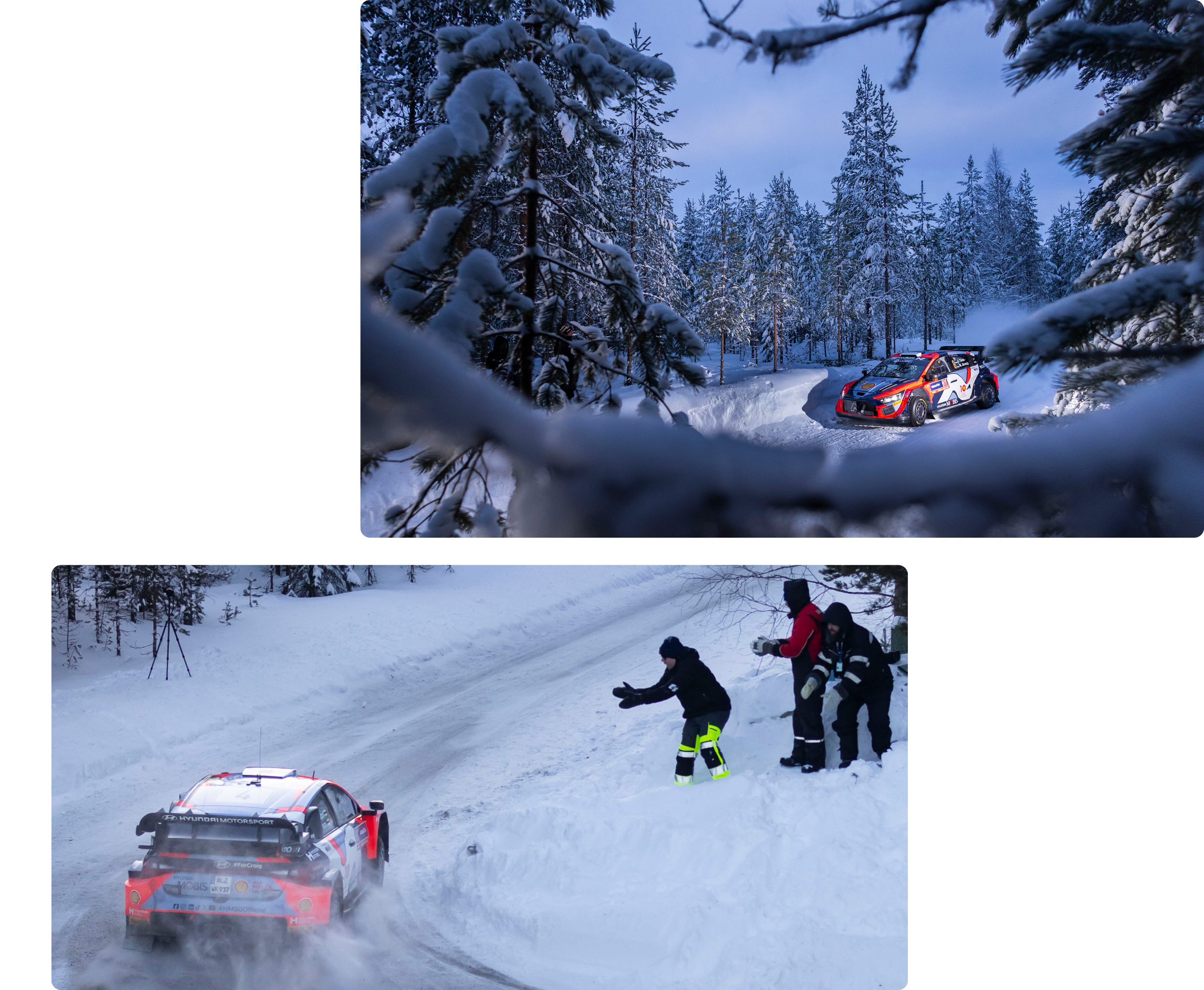
On Saturday, February 17th, the Swedish Rally’s third act unfolded with repeated stages, wrapping up with a 10.08km extended sprint in Umeå by evening. This was the longest day of the race, with a combined distance of 125.96km from SS9 to SS15. The most extended leg of the rally saw the drivers adjusting to a new start order based on the current standings, with all but the M‒Sport Ford duo and Bertelli carrying just a single spare.
The 15.65km‒long SS9 Vännäs, a beloved stage within the Swedish national rally now making its WRC debut, witnessed Tanak clock the fastest time, followed closely by Evans and Rovanpera. Katsuta, moving swifter than Lappi, narrowed their gap to just 0.9 seconds, while Fourmaux ousted Solberg to claim third.

SS10 witnessed another shake‒up in the lead pack when Katsuta veered off course and plunged into a snowbank, relinquishing his second‒place position. The snowbanks lining the roads can act as walls, maintaining speed through corners or serving as guides on slippery surfaces, but a moment’s inattention can turn them into rally car‒devouring monsters.
Katsuta’s retirement eased the pressure on leader Lappi, catapulting Fourmaux directly to second place overall. Rovanpera clocked the fastest time on SS10. In SS11, Fourmaux, as if to assert that his second place was no fluke, snagged the top time. Lappi, holding a lead of over a minute, remarked,”I was over‒safe, but I don’t know what else I should do, to be honest. The time is what it is. We are not touching the banks. The last kilometres [of SS11] were really messy with no grip at all.” Meanwhile, Neuville struggled throughout the morning to find the right setup, further complicated by recurring intercom issues.
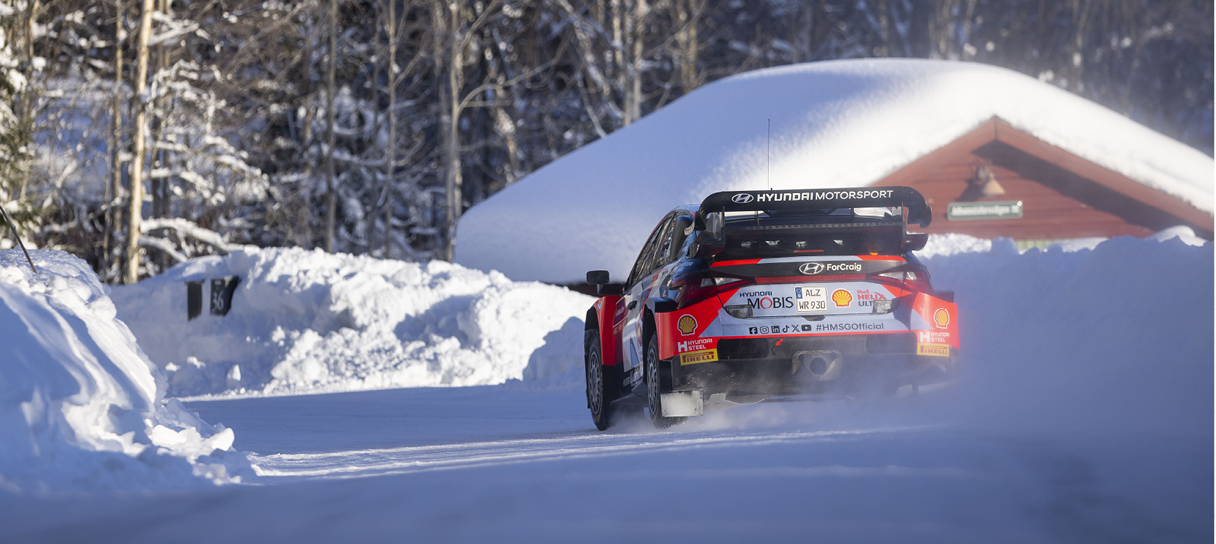
From SS12 onwards, the morning stages were revisited. Elfyn Evans conquered SS12, narrowing his gap to Fourmaux to 14.7 seconds. As the snow was cleared, revealing rocks and dirt, tire wear accelerated, necessitating careful tire management by the drivers. Neuville, improving his pace, took top time in SS13, reducing the gap to Evans to under a minute by the end of the remaining stages.
By the end of Saturday, Lappi remained the leader, poised to secure at least 18 points if he finished on Sunday. Remarkably, M‒Sport Ford’s Adrien Fourmaux was in second place. Evans, grappling with a lack of grip, failed to close the gap to Fourmaux. Neuville, in fourth, faced a significant 59‒second deficit to Evans, making a podium finish challenging. However, the introduction of a new point system meant that Sunday’s performance alone could yield up to 12 points, setting the stage for a fierce battle among those with “nothing to lose” like the early retirees on Friday, Tanak and Rovanpera.
WRC2 drivers dominated from fourth place downwards, with Oliver Solberg maintaining his class lead despite an earlier off into a snowbank, followed by Sami Pajari, Georg Linnamäe, and others. Lorenzo Bertelli was on the cusp of scoring points, trailing Juhana by a mere 15.2 seconds.
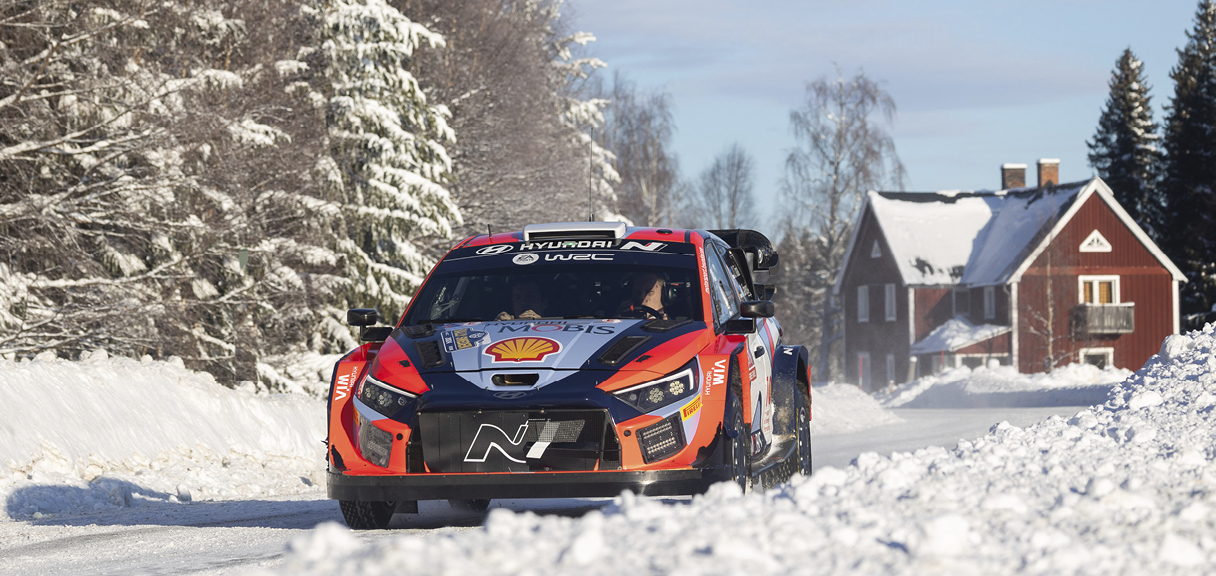
The final day’s schedule dawned, marking the climax of the Swedish Rally. On Sunday, February 18th, the competitors tackled the 25.5km Västervik stage twice before concluding with Saturday night’s Umeå stage. The total distance of 61.08km across the three stages promised a thrilling finale.
Rovanpera set the pace in the opening stage (SS16), followed by Evans, Katsuta, Tanak, and Neuville. After servicing, the same course was run again in SS17, with Evans fastest, followed by Neuville and Fourmaux. A mishap with a snowbank dropped Fourmaux to third, leaving the final stage as the decider between him, Lappi, and Evans.

The high‒speed contest of the Umeå stage, run under the cover of darkness on Saturday, was now a midday battle for speed. Katsuta was the first Rally1 class driver to enter the stage, with Rovanpera posting the top time, followed by Evans, Neuville, Tanak, and Katsuta. Despite a heavy landing from a jump that dislodged his rear gate and wing, Neuville managed to secure an additional 3 points.
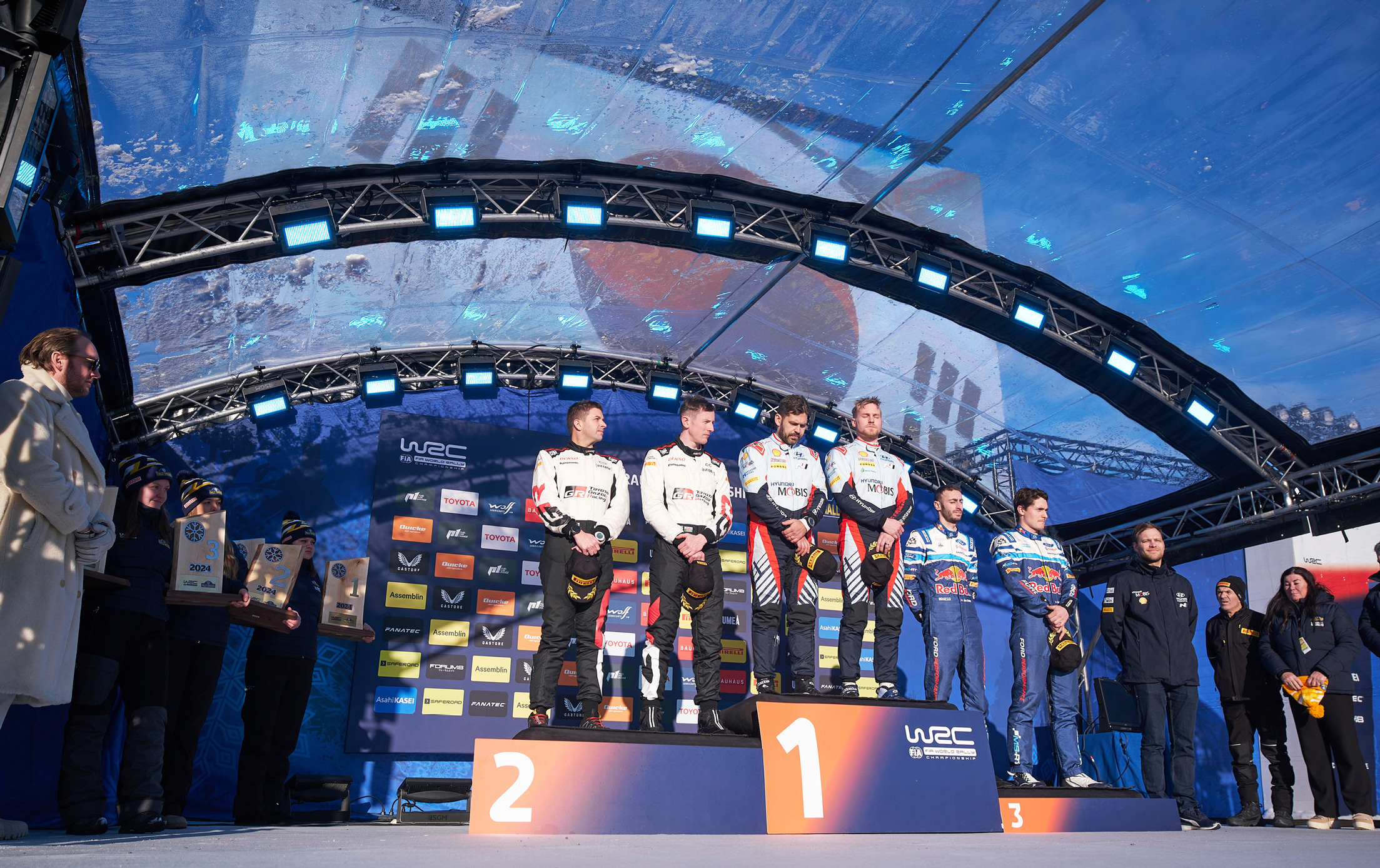

Prioritizing a safe drive to victory, Lappi ultimately clinched his second career win, marking his first triumph since joining Hyundai and his first since Finland in 2017, six and a half years ago. After showing promise with four podium finishes last year but facing untimely retirements, this win eases the competitive tension within the team, suggesting a brighter outlook for Lappi.
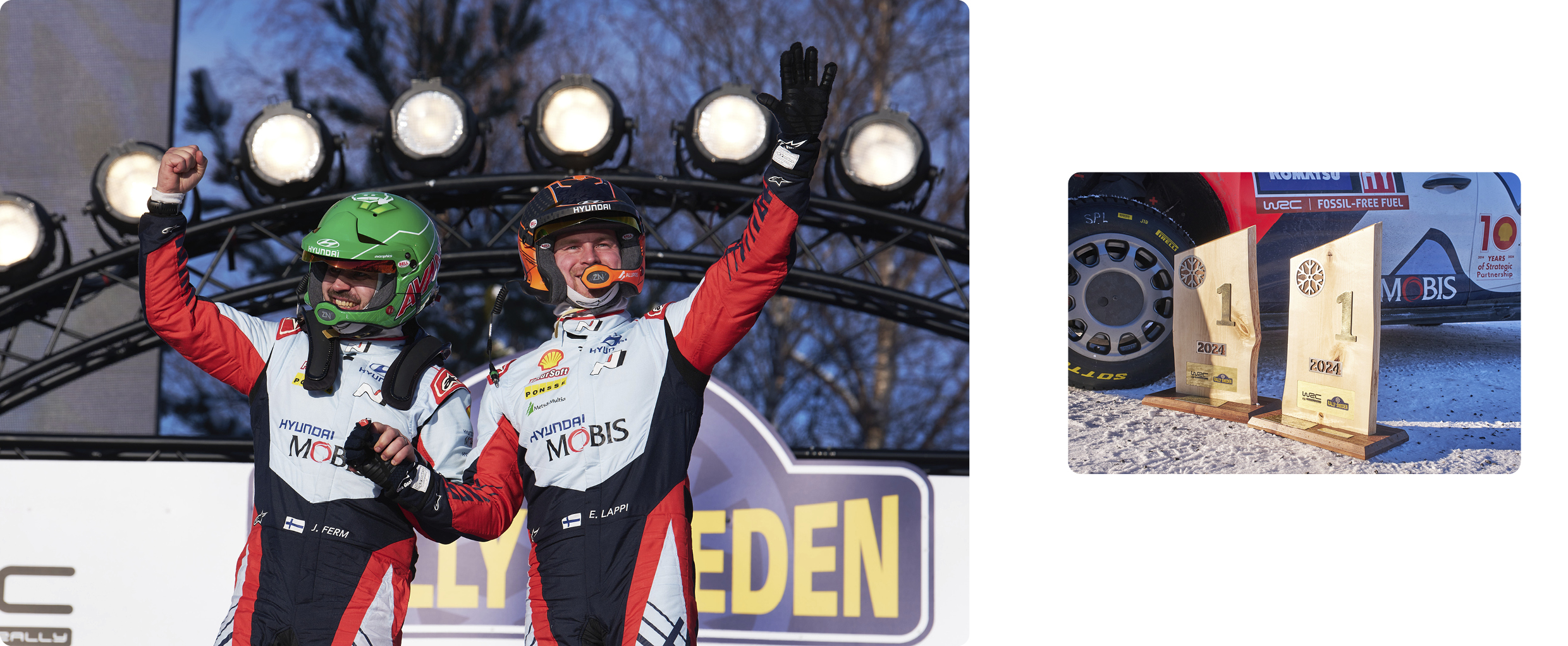
Lappi expressed after the race, “I have to say a big thanks to Cyril for keeping me in the team after a difficult second half of my 2023 season; this moment is such a huge contrast to that. A massive thank you to the team, and to my family at home as well. We are all here to win and when you achieve it, it is the best feeling in the world.”
Meanwhile, the podium was shared by three different manufacturers, with Evans securing 2nd place and Fourmaux taking 3rd. Evans narrowed the gap to Neuville in the championship points by 3 points, while Fourmaux, for the first time in his career, stepped onto the podium, receiving congratulations from his colleagues. He also skyrocketed to 3rd place in the championship standings, right behind Neuville and Evans.
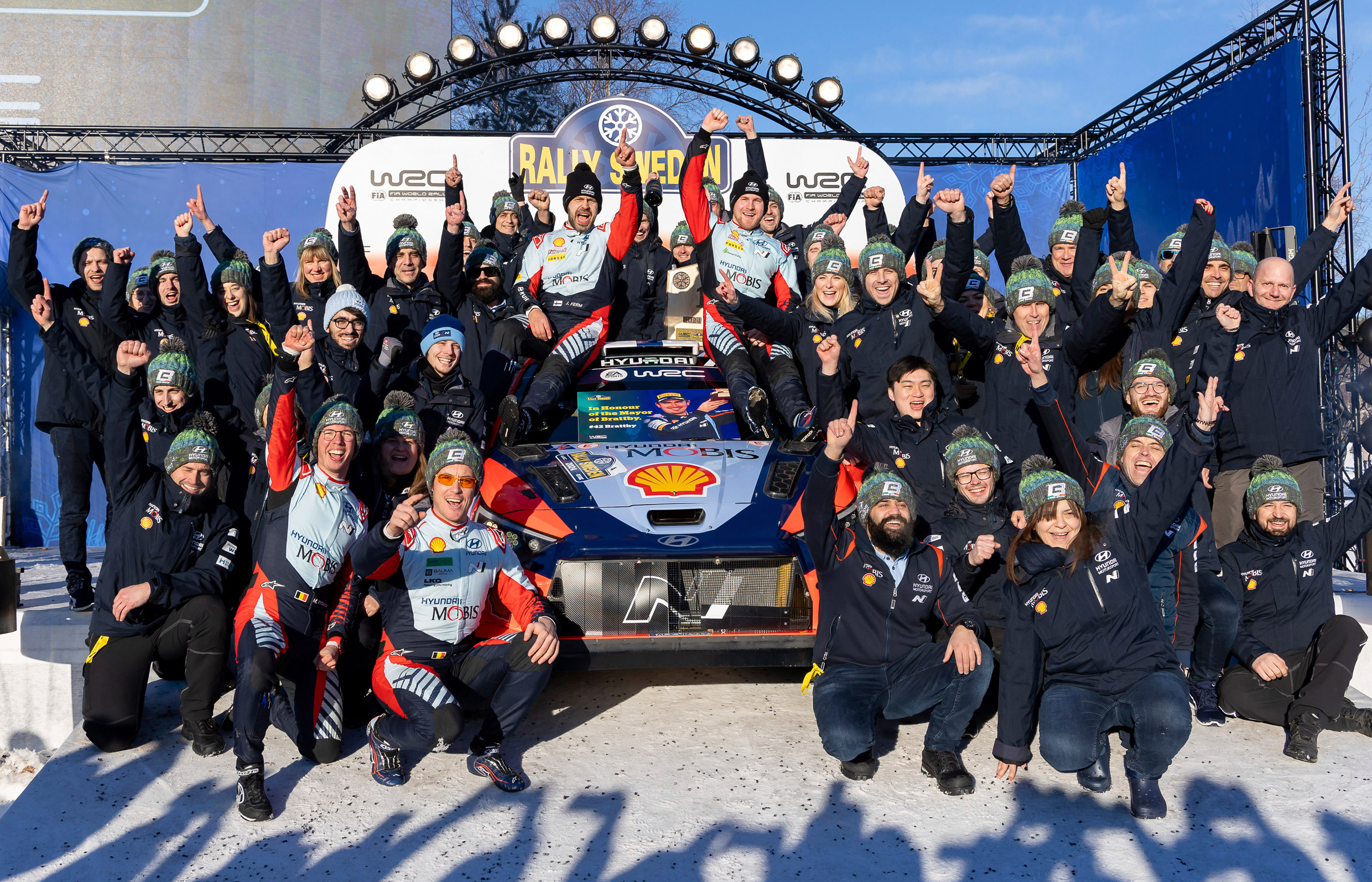
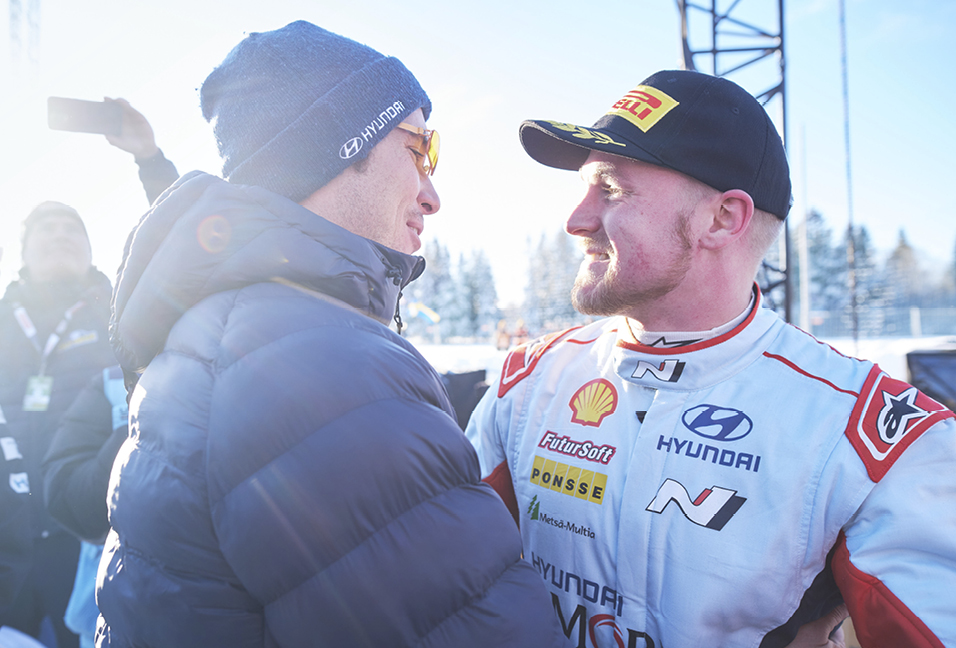
Neuville, who had a significant drop in rank due to early race troubles, showcased solid crisis management. Finishing the race in 4th place, Neuville closed the gap in points with Evans but maintained the championship lead with 18 points secured. In the manufacturers’ standings, Hyundai surpassed Toyota to take the lead in points. Although the points were tied, Hyundai had more wins. With consecutive victories from the opening round, Hyundai has heightened expectations for capturing this season’s championship title.
The 3rd round, scheduled for March 28‒31, will replace Mexico with the Kenya Safari Rally. As last year’s June event moves to March, it will be interesting to see how the environment changes. The rugged terrain, hardly called a road, is filled with unpredictable dangers, including erratic weather and herds of animals. Hyundai, which didn’t reach the podium last year, is gearing up for redemption with improvements to their rally car.
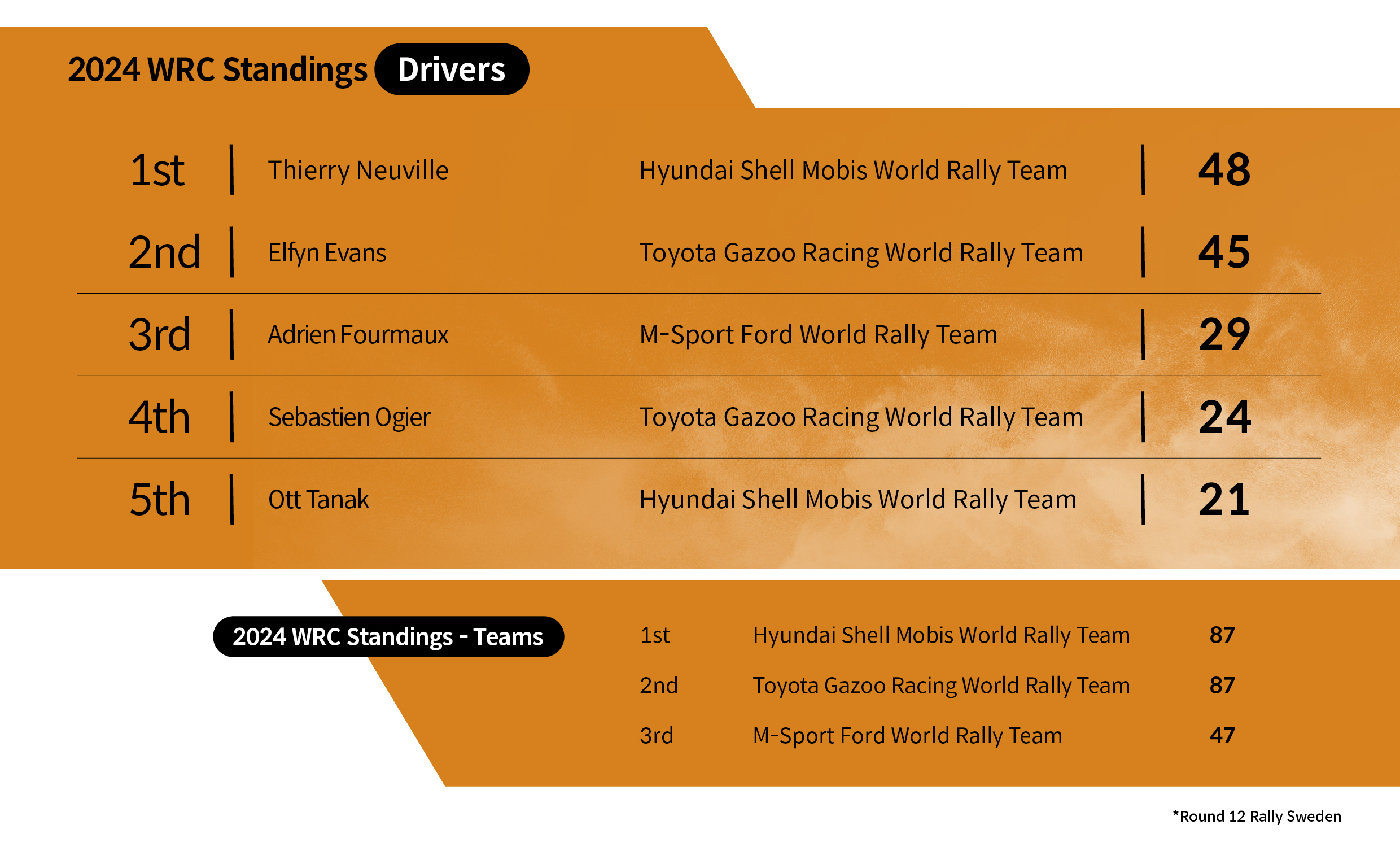
by Su-jin Lee (auto critic)
He started as an automotive journalist after passionately sending letters to the launch of the Korean car magazine